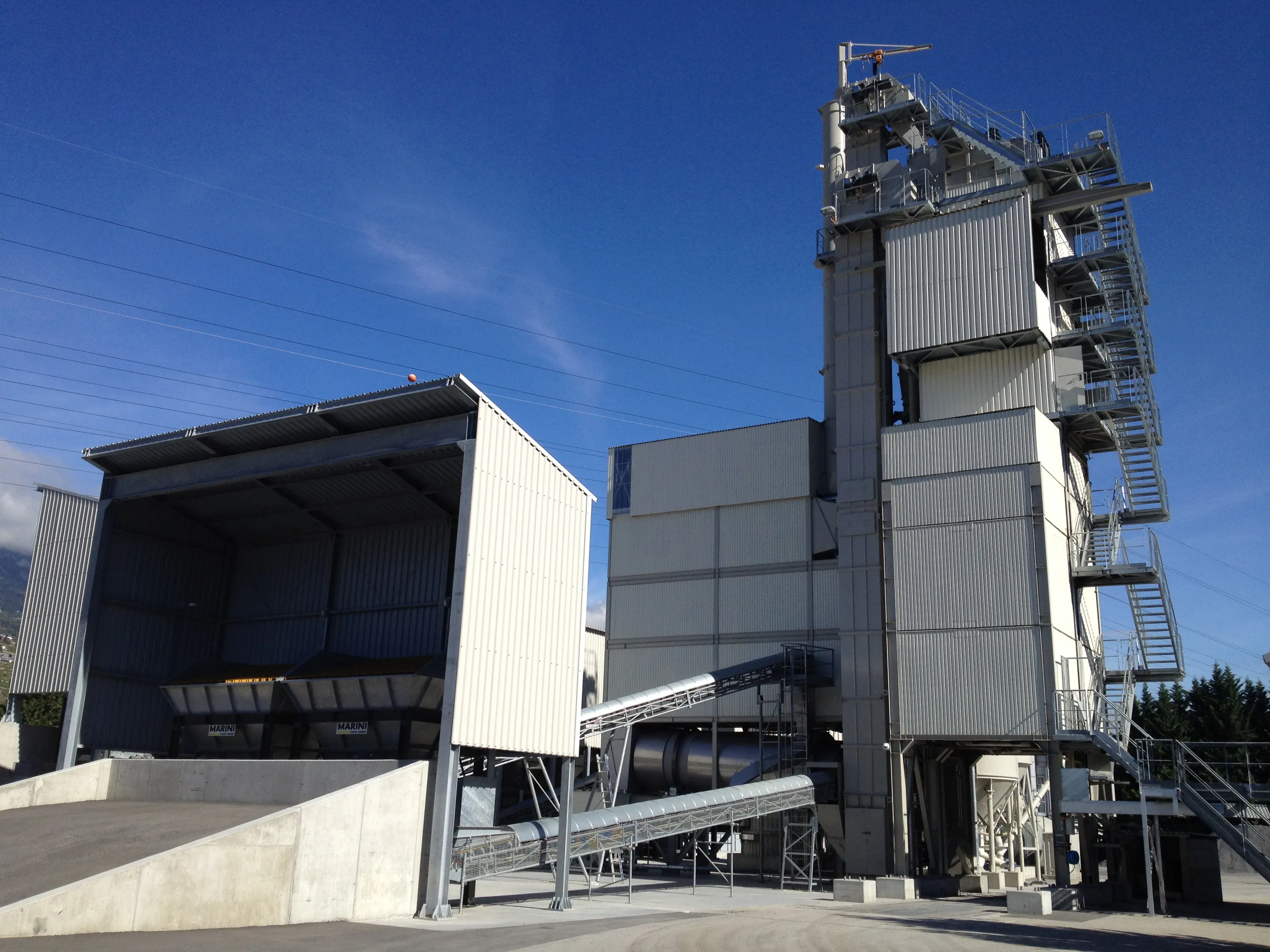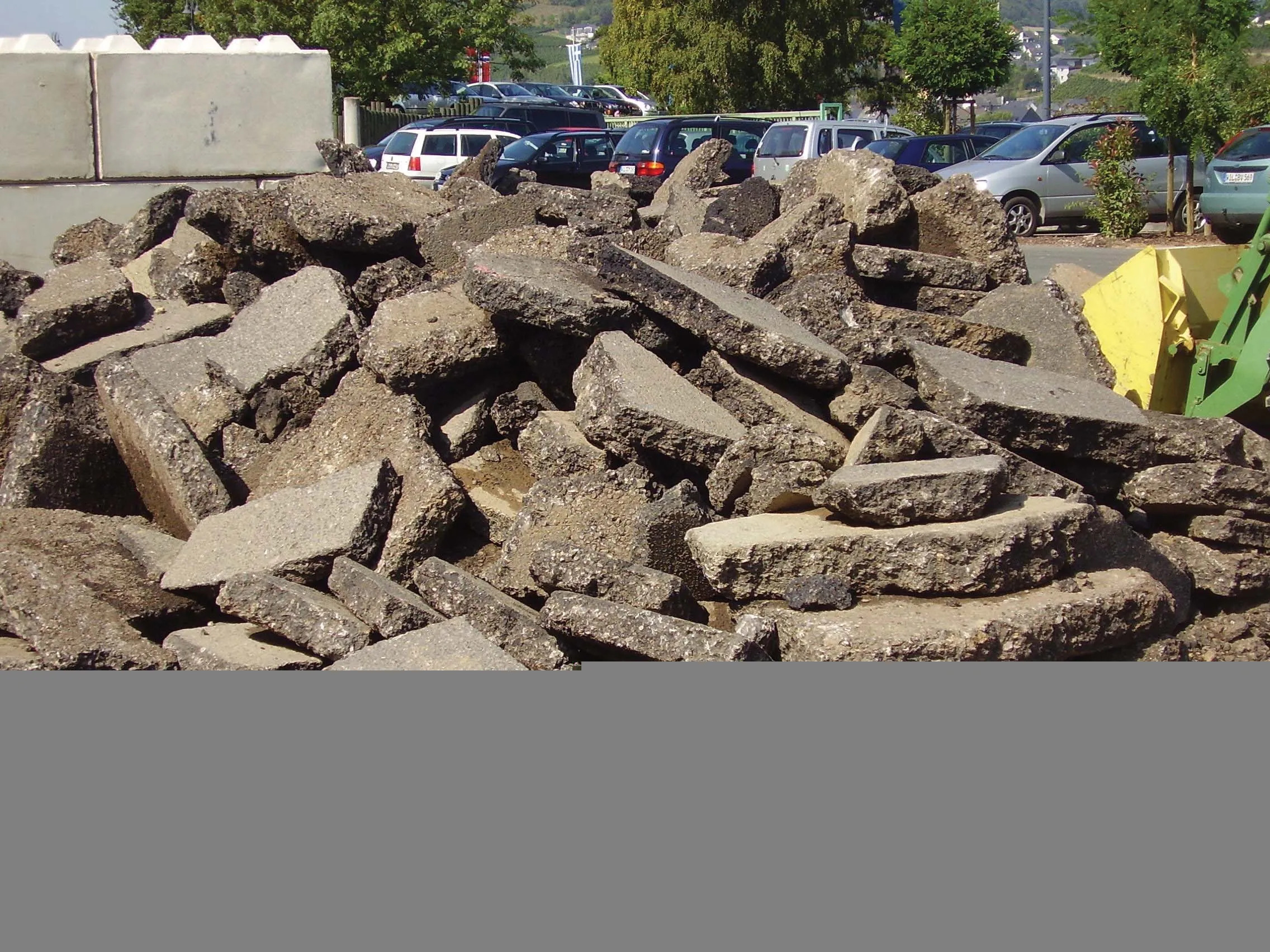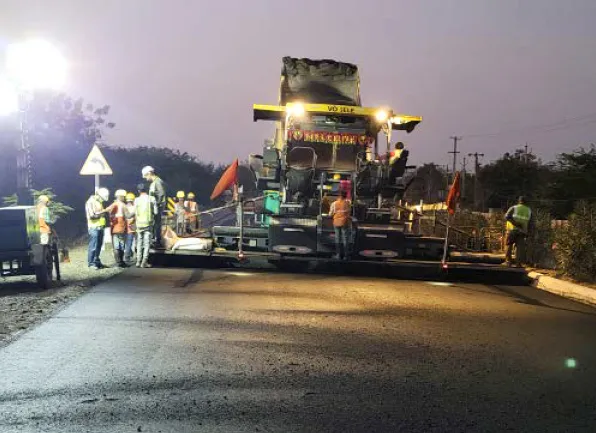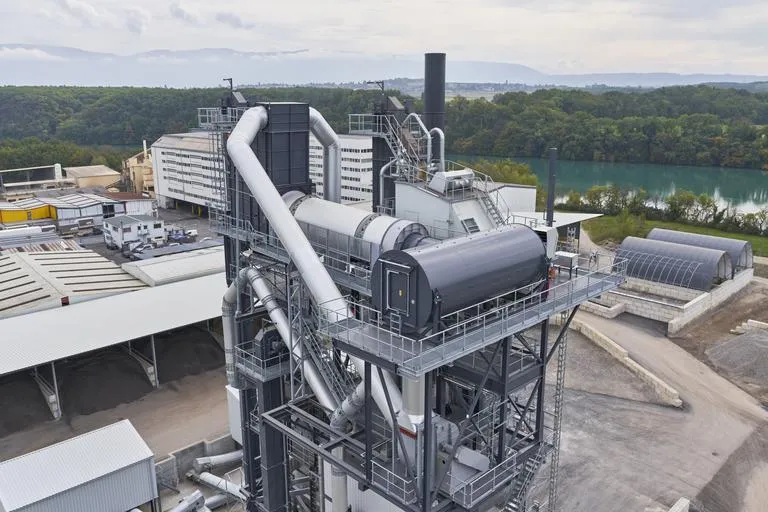
There are important methods aimed at the reuse and recycling of reclaimed asphalt pavement (RAP)
A number of problems have to be solved however, mainly concerning the elimination of moisture content and how best to heat the RAP without damaging the binder. When RAP is used in percentages of up to 30-40% of the final mix, heating can be carried out through direct contact with hot aggregates. On the other hand, in order to use higher RAP percentages, up to 100%, the plant has to be fitted with a specific heating cylinder, which prevents the material from overheating. Meanwhile warm techniques can allow operations at a lower temperature and conserve the characteristics of the recycled binder. The use of rejuvenating agents such as fluid bitumen and other additives can also help.
The reuse of material from milling existing pavement is a practice that has been considered important for decades. But it is now the subject of much research to develop new techniques and technologies, which are becoming more and more refined. Reusing material helps protect the environment and reduce waste, while lowering costs.
Using RAP means that there is a reduction in the quantity of waste material. The degradation of road surfaces necessitates repairs, which results in the production of high quantities of RAP that is considered as special waste, with consequent problems regarding its management. However reusing the RAP helps decrease extraction from quarries, with the obvious advantage of protecting the environment and avoiding the waste of non-renewable resources. This also delivers an energy saving, due to the reduction of extraction activities and aggregate processing, as well as a reduction in transport.
RAP recycling cuts the use of both quarried aggregates and bitumen, achieving a circular economy as the operation can be carried out repeatedly, avoiding the need to waste material.
The new challenge set by an increasing number of countries is represented by the progressive increase in RAP percentages, up to a possible 100% with certain special applications.
In many countries there is no legislation limiting the use of RAP in the asphalt mix; the choice is often up to the project manager or the contract specifications.
With the appropriate controls, the correct proportions of the ingredients and the employment of adequately equipped plants, it is possible to produce a high-quality mix. Generally, it is recommended to use high RAP percentages in the lower layers of the pavement (with basic conglomerate or binder), while in the surface layers, it is preferable to use very low percentages.
Using RAP requires certain key points. Firstly, it necessitates preliminary RAP treatment through a plant devoted to RAP crushing and reselection in different sizes. It also needs a specialised laboratory in order to design the optimal mix. There has to be a good knowledge of the RAP content in order to identify the type and quantity of the virgin aggregates required to integrate the grading curve. And it also requires precise information on the bitumen content in the RAP, because it is aged and therefore has a lower penetration than the original virgin bitumen. It is also harder because, during the mixing phase in the plant and during its life in the road pavement, it is subject to oxidation processes, which alter its properties. When employing RAP, the higher viscosity of the older bitumen might also produce a resistance to mixing. As a result, the properties of the bitumen in an asphalt mix using RAP have to be balanced by adding correctly graded virgin bitumen and special rejuvenating additives.
Finally, during the removal phase, it is also important to carefully store the RAP, graded according to its source and to ensure that it is covered, to minimise the moisture content. These are determining factors in the employment of RAP. However, further measures are necessary for RAP to be used effectively. The topic of RAP cannot be considered only in technical terms because nowadays environmental issues are becoming increasingly important. Ultimately, the need arises for constructive and positive collaboration between public authorities, manufacturers and plant operators. Consequently, the question which has been raised and which requires an environmental, ethical and technical answer has to be addressed. How can a firm utilise RAP to obtain a mix with the same quality as the traditional mix (preserving the bitumen in the RAP and optimising the percentage) while managing the emissions produced by the plant?








